Abstract
Six institutionalized children, aged 7-11, with little or no spontaneous vocal manding, were trained to request food items under appropriate natural conditions when snacks were presented. “I want a” was appropriate when an adult presented food in the playroom. “Out” was appropriate when the items were displayed in the hallway, across a half-door barrier from the child. A sequence of steps was trained, through increasingly naturalistic setting and cuing conditions. The two mands were trained in sequence, not concurrently. To encourage “spontaneous” productions, no vocal cuing was provided by the adult. After criterion performance in each step, several probe sessions were conducted for various cuing conditions, adults, and settings. Probes after imitation training showed no spontaneous manding. Thus, failure of manding was not due to production difficulties. In probes after training for “approximately” natural cues, most children showed little transfer to the natural cues. This implies that training for the specific appropriate cues may often be required. However, good transfer generally occurred across persons, and from training room to playroom. Probes also showed that most children did not use one of the trained mands in the stimulus conditions that were appropriate for the other mand. Thus, adding a second mand did not generally disrupt use of the first. However, significant disruption occurred for two children. Finally, at the end of training, extinction training was given for one mand in one setting. Performance of the other mand was little affected. In sum, the appropriate form of a mand depends on specific stimulus and setting characteristics, and these characteristics must be considered in training.
Keywords: language training, generalization, verbal behavior, expressive language, retarded children
Full text
PDF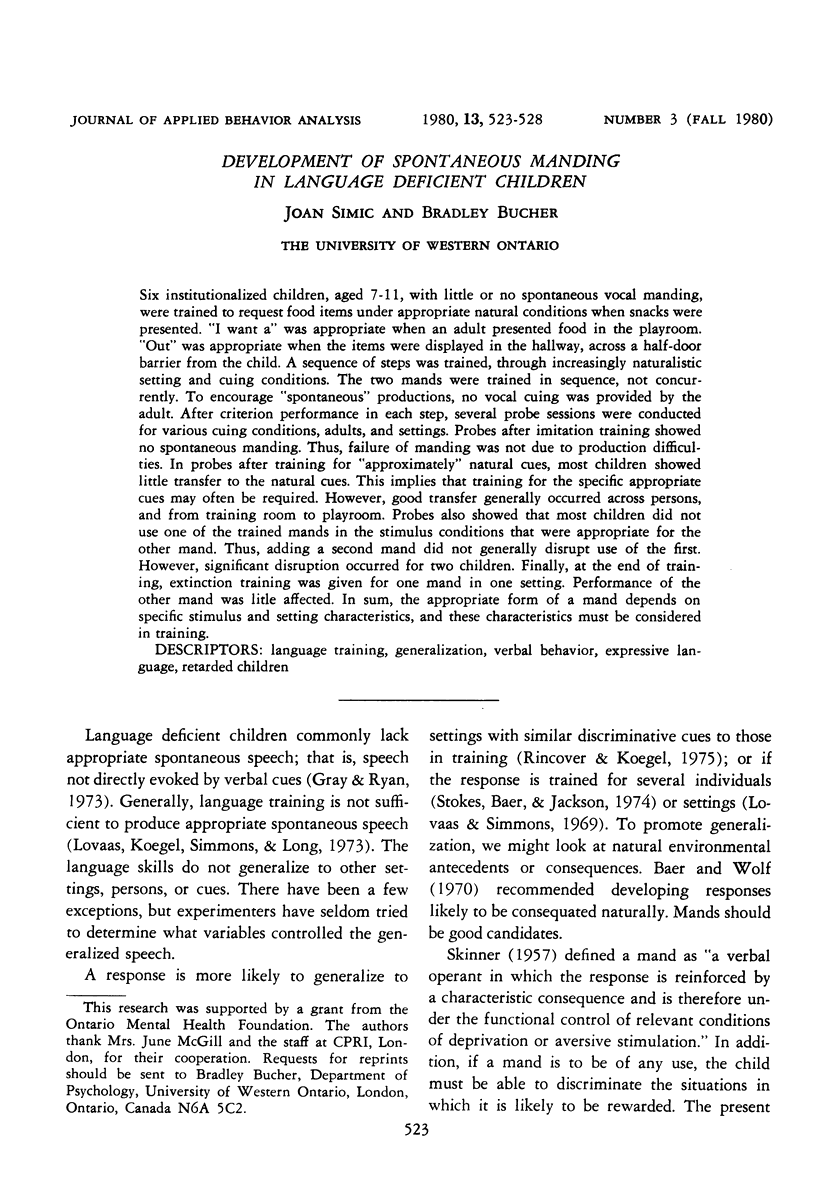
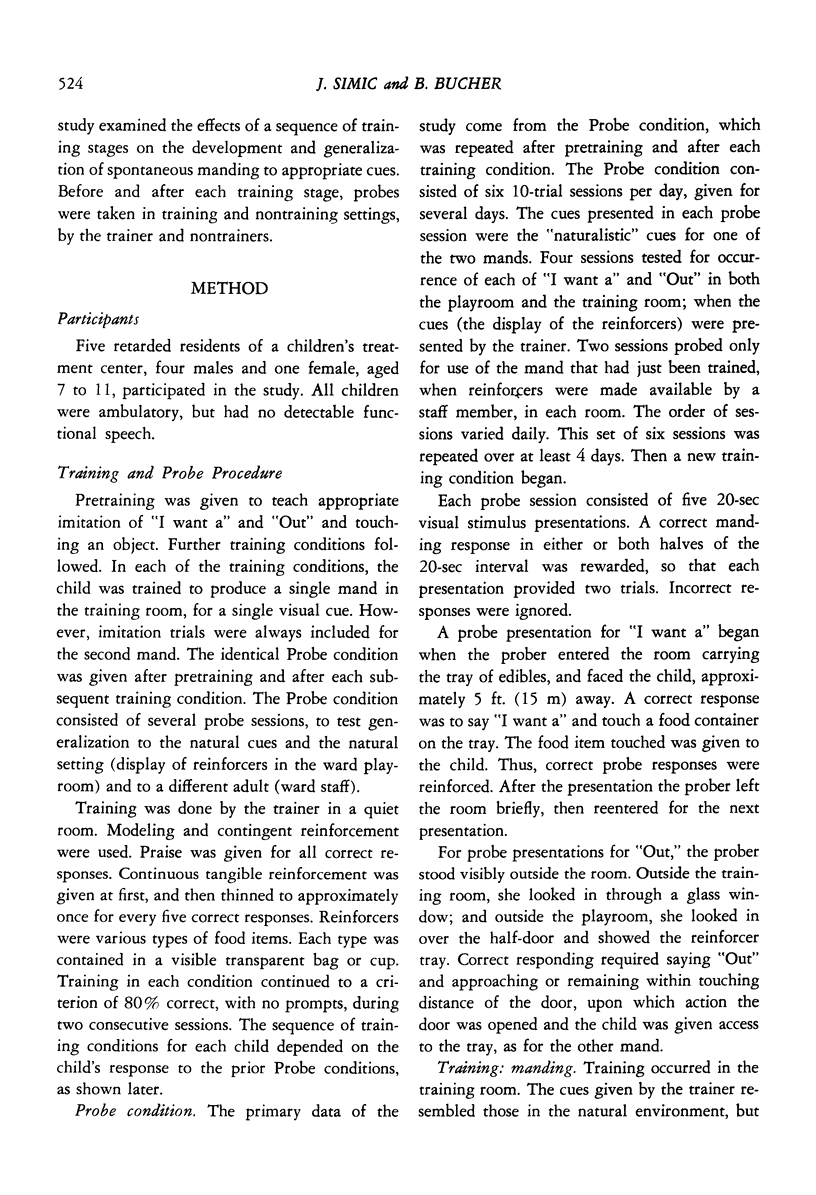
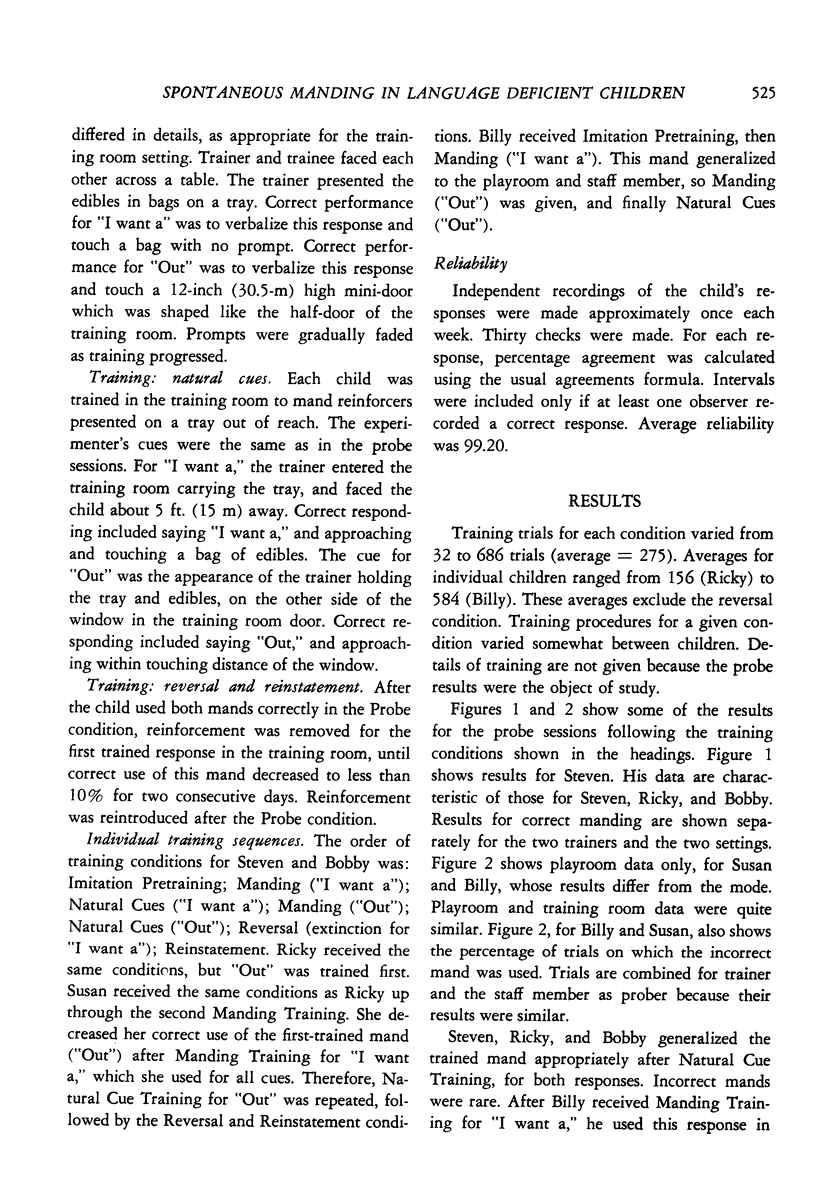

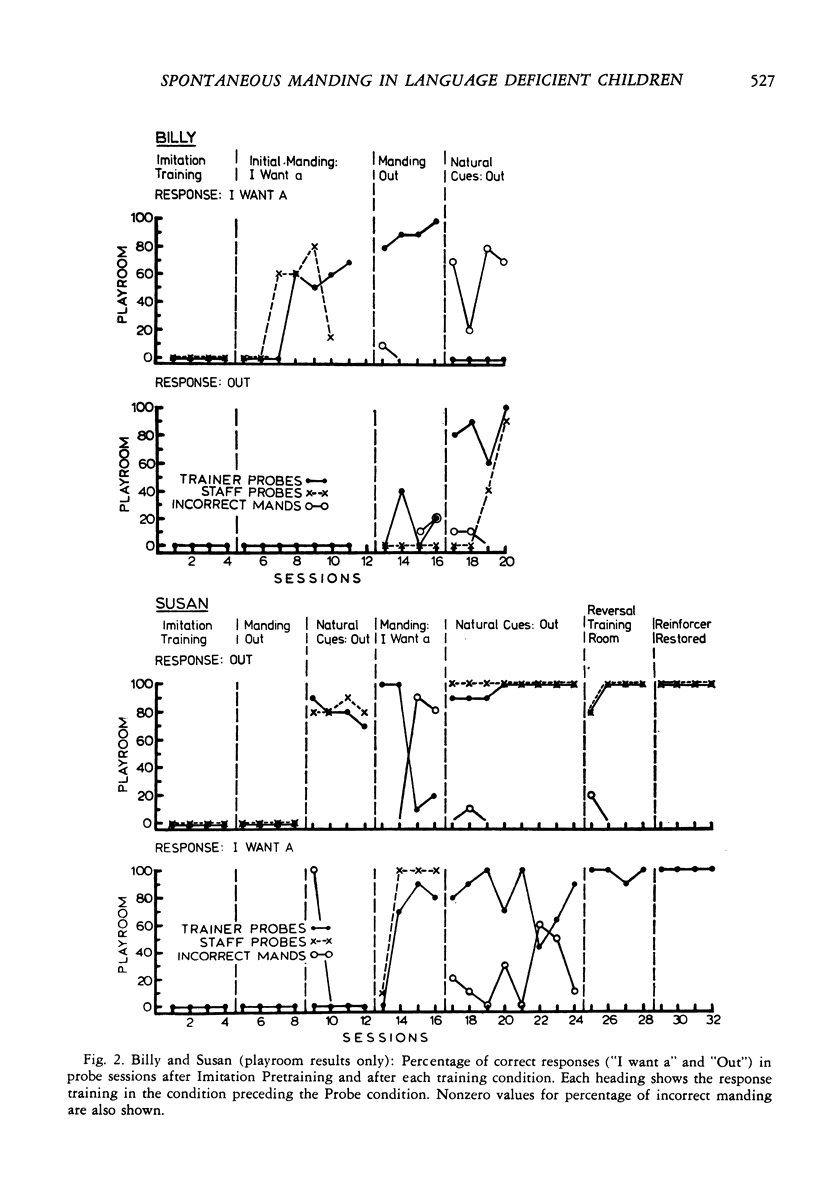
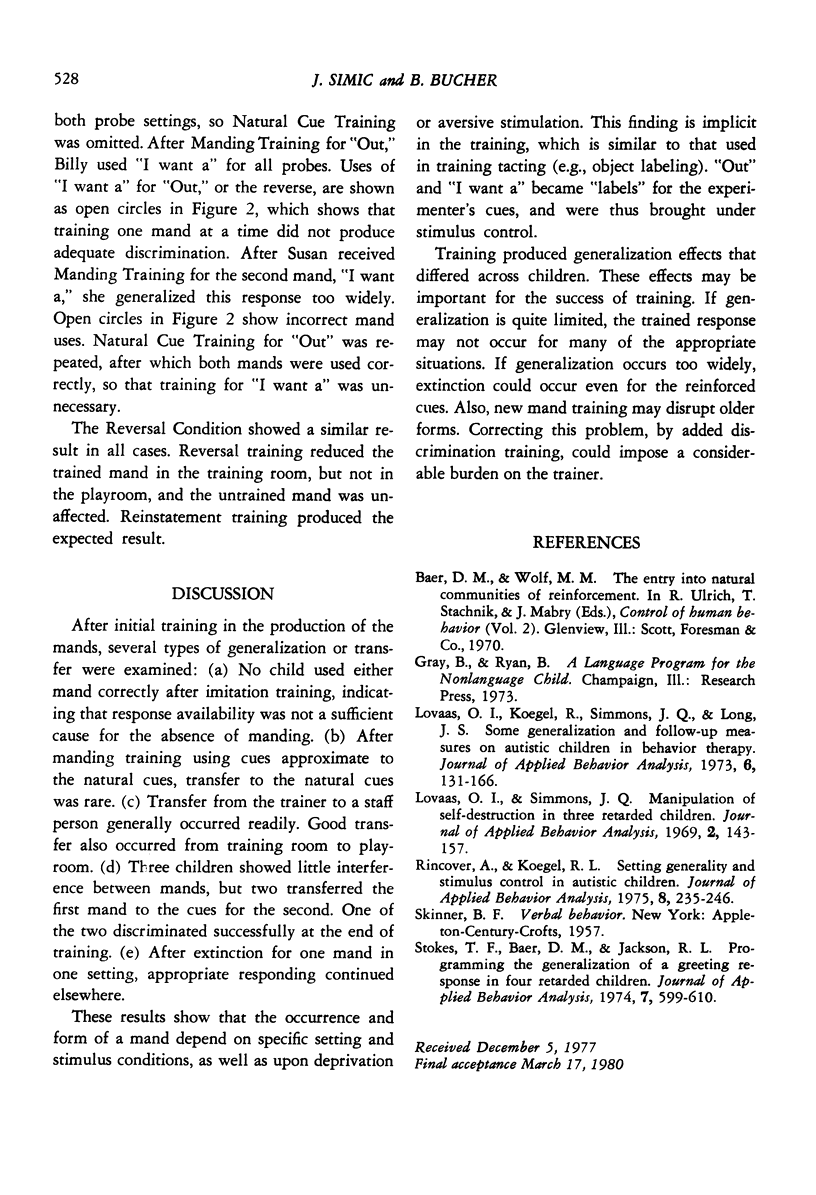
Selected References
These references are in PubMed. This may not be the complete list of references from this article.
- Lovaas O. I., Koegel R., Simmons J. Q., Long J. S. Some generalization and follow-up measures on autistic children in behavior therapy. J Appl Behav Anal. 1973 Spring;6(1):131–165. doi: 10.1901/jaba.1973.6-131. [DOI] [PMC free article] [PubMed] [Google Scholar]
- Lovaas O. I., Simmons J. Q. Manipulation of self-destruction in three retarded children. J Appl Behav Anal. 1969 Fall;2(3):143–157. doi: 10.1901/jaba.1969.2-143. [DOI] [PMC free article] [PubMed] [Google Scholar]
- Rincover A., Koegel R. L. Setting generality and stimulus control in autistic children. J Appl Behav Anal. 1975 Fall;8(3):235–246. doi: 10.1901/jaba.1975.8-235. [DOI] [PMC free article] [PubMed] [Google Scholar]
- Stokes T. F., Baer D. M., Jackson R. L. Programming the generalization of a greeting response in four retarded children. J Appl Behav Anal. 1974 Winter;7(4):599–610. doi: 10.1901/jaba.1974.7-599. [DOI] [PMC free article] [PubMed] [Google Scholar]


